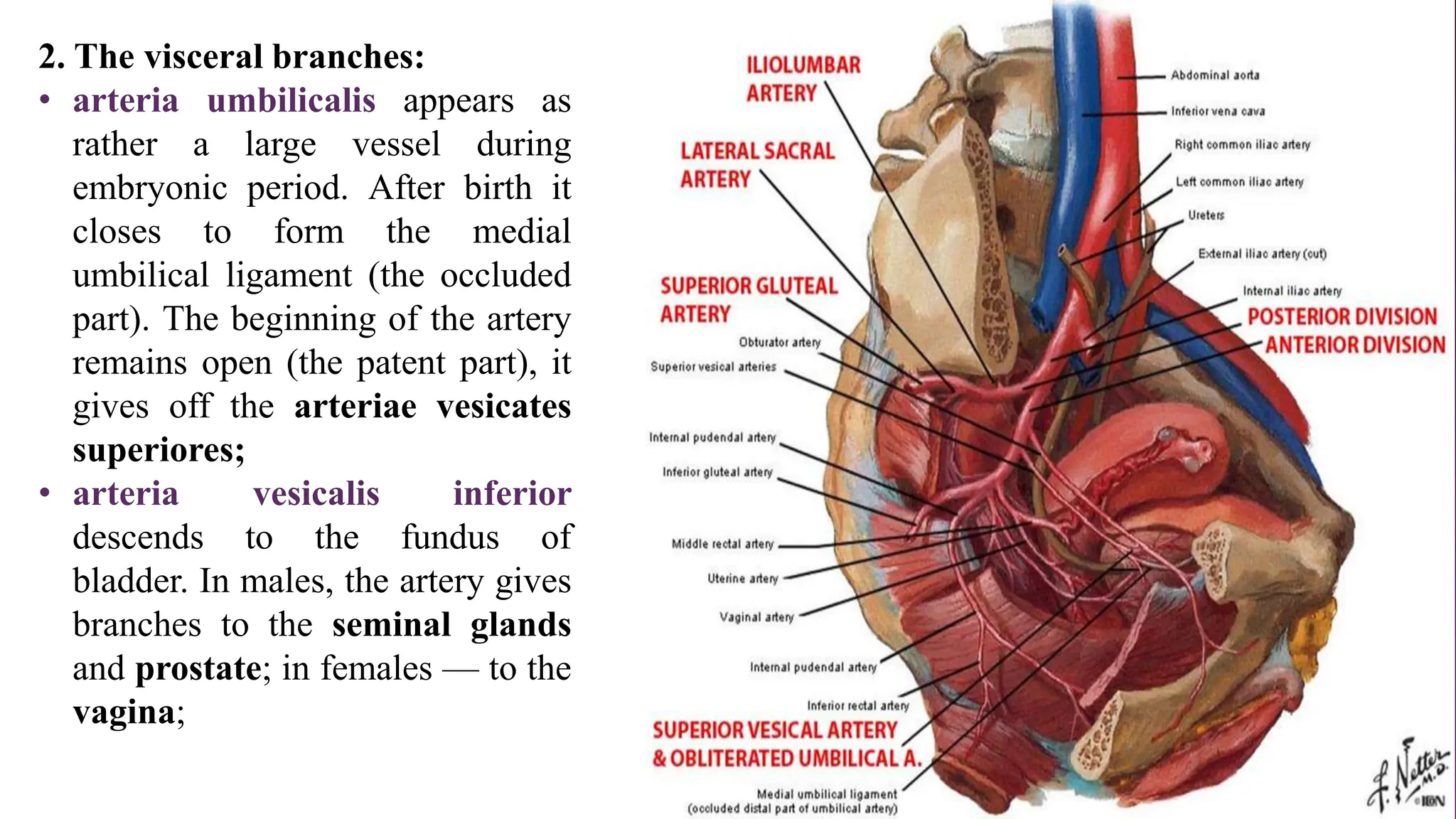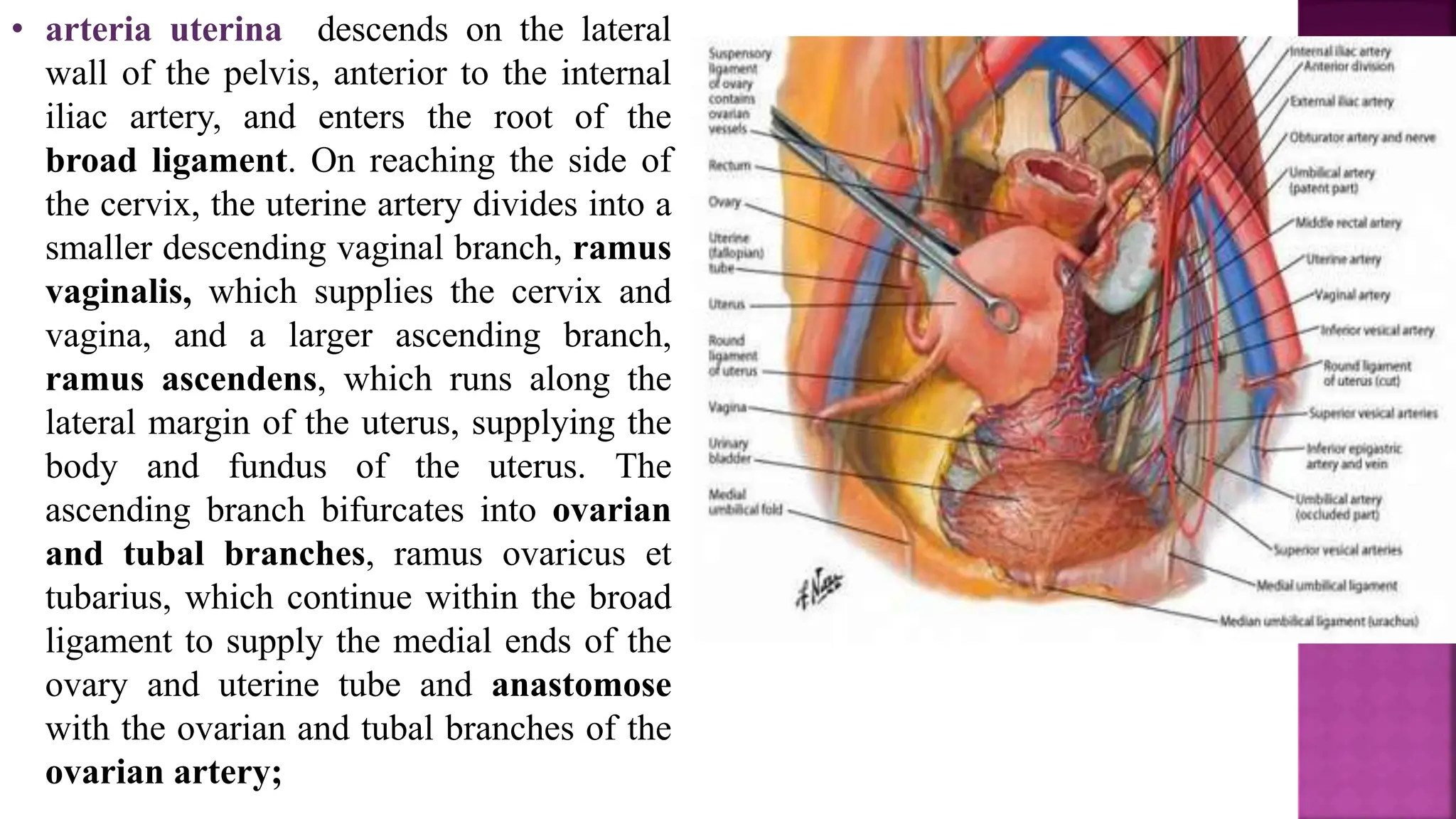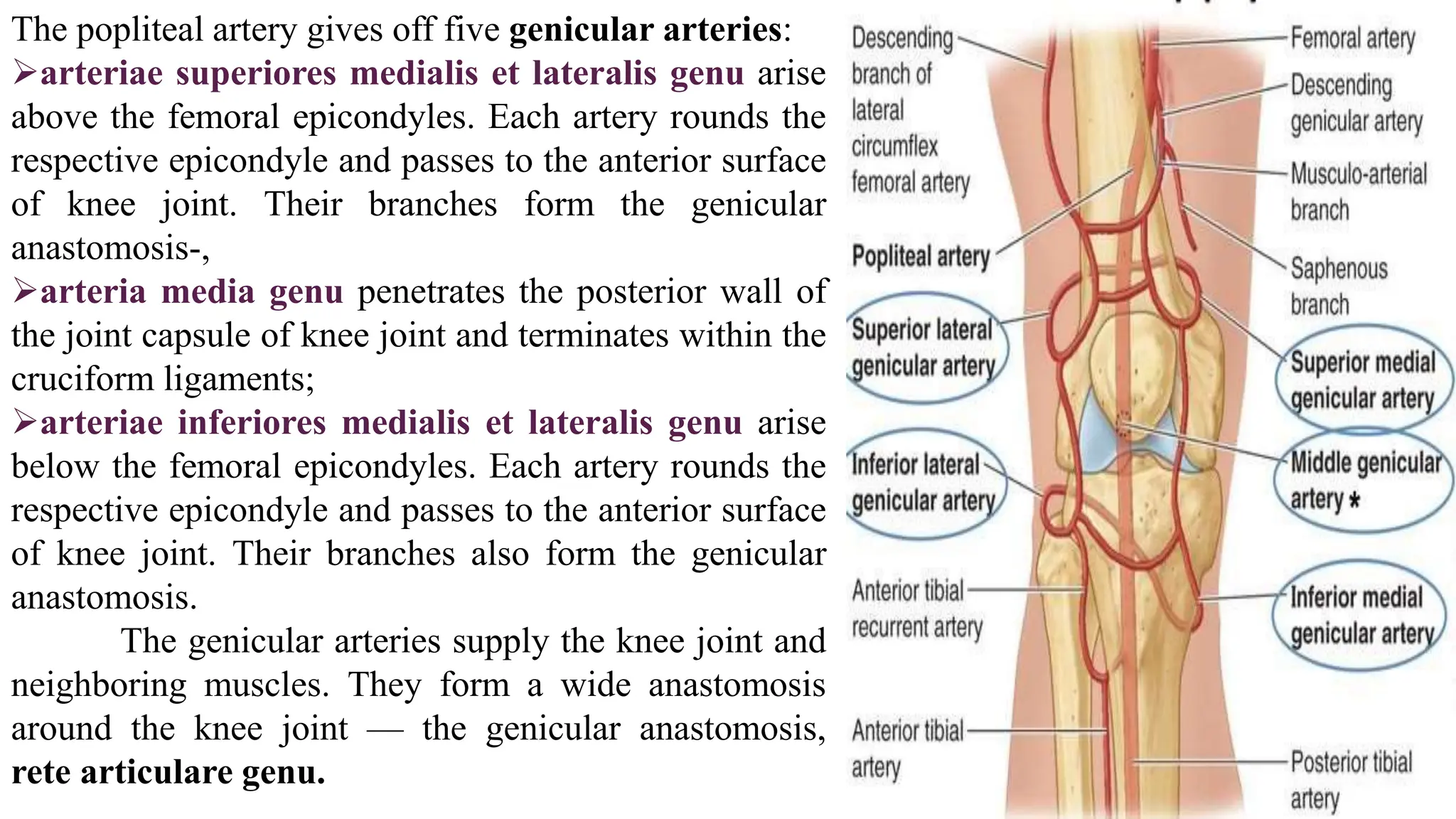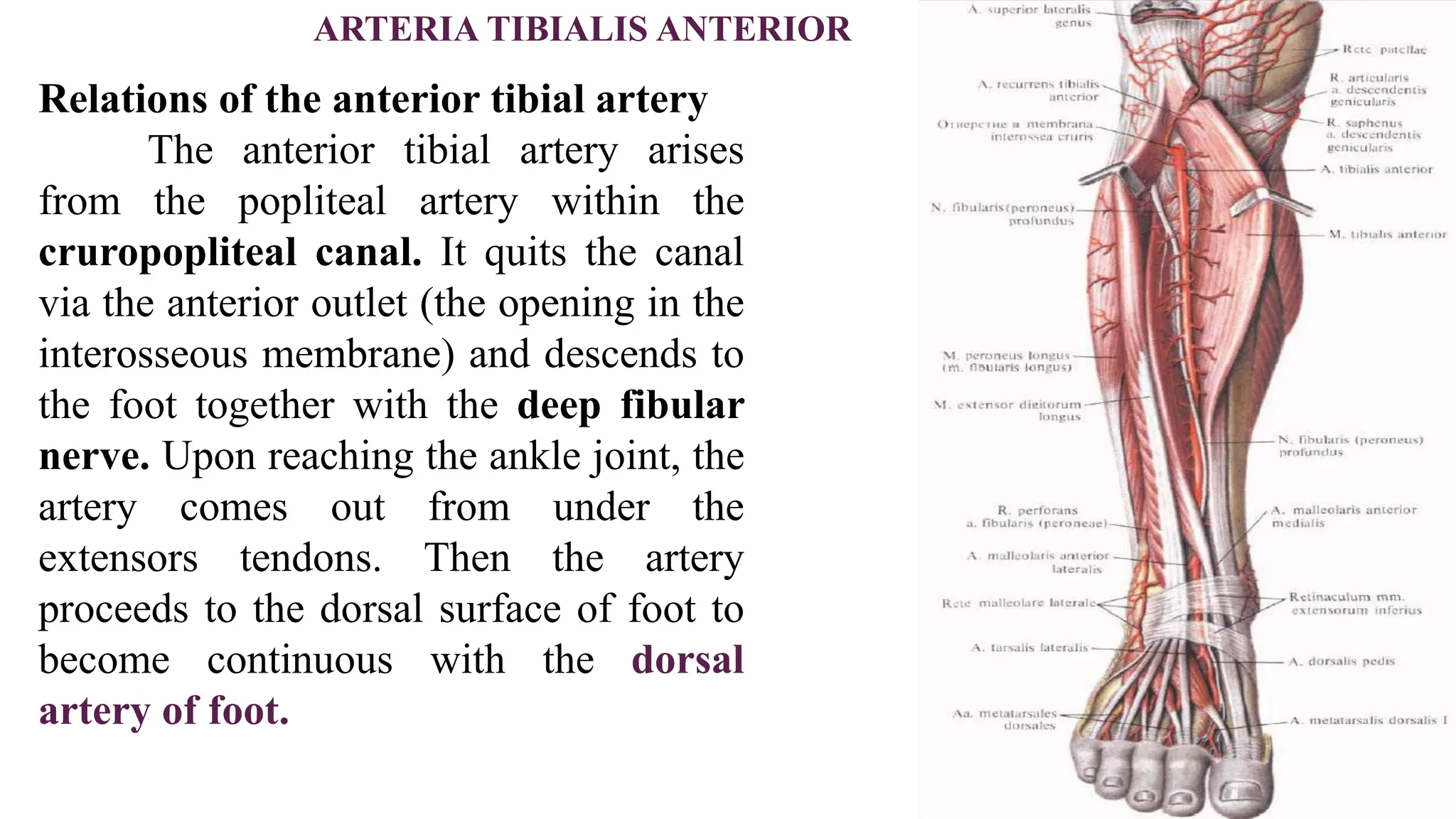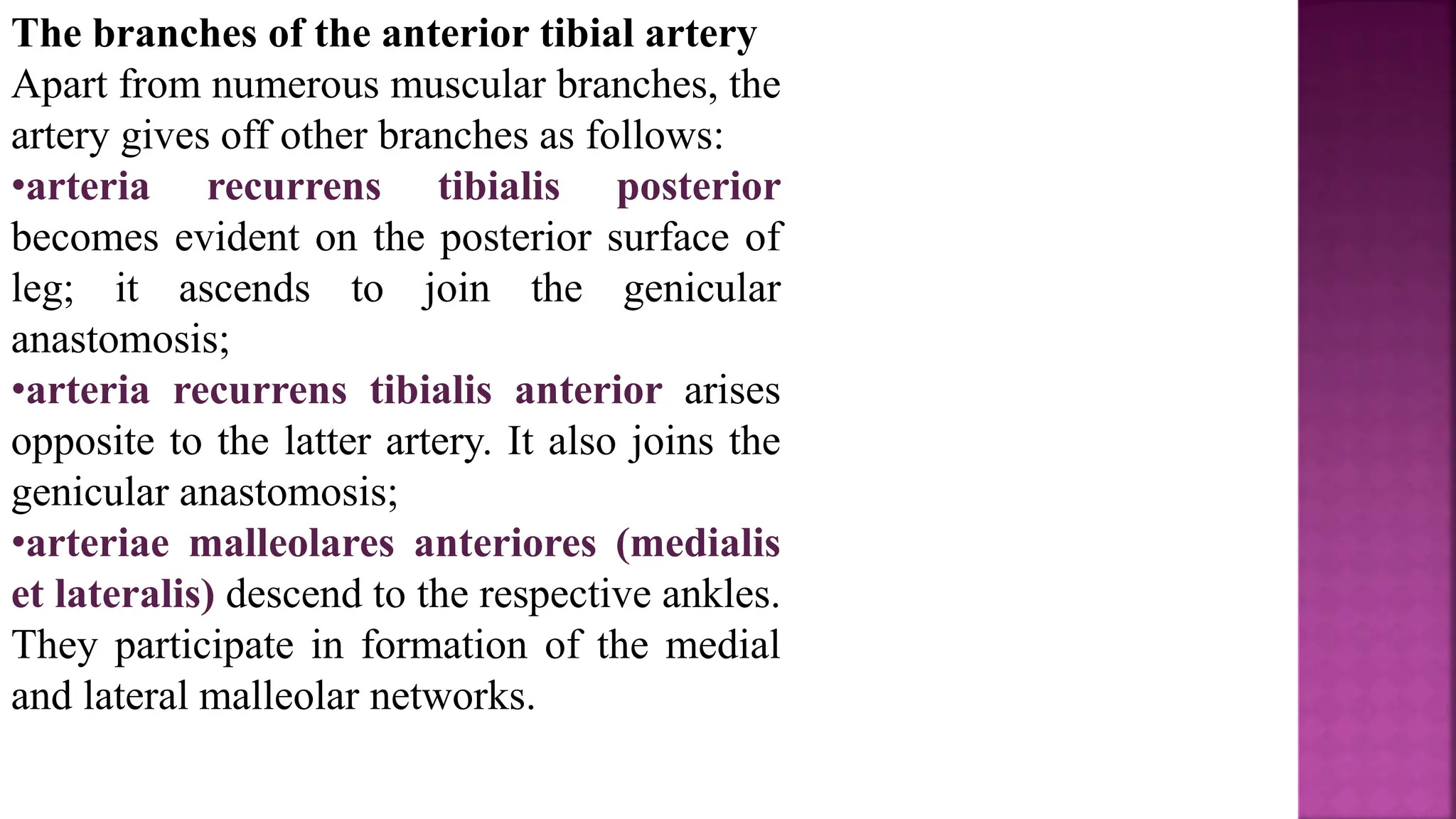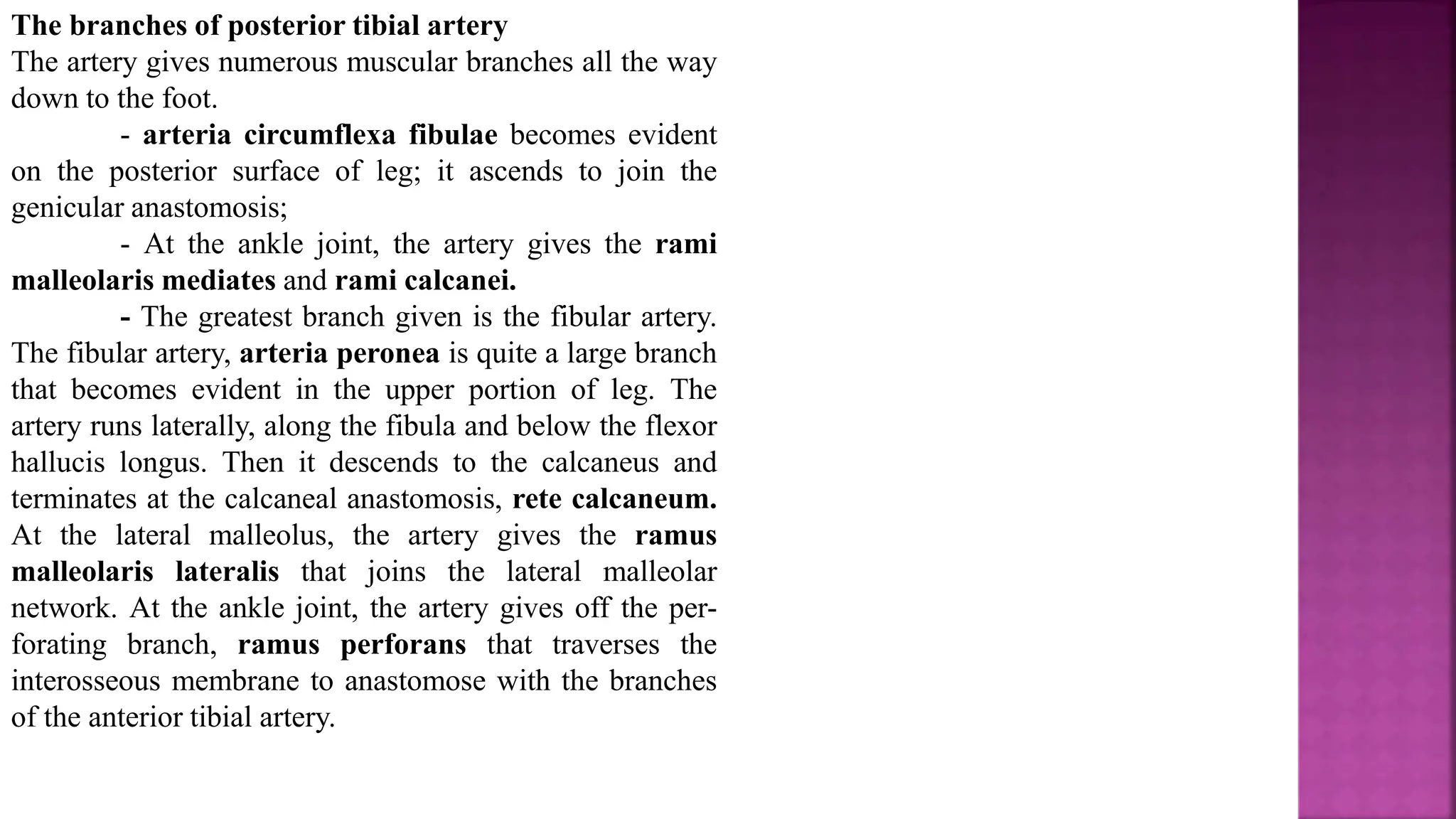The document summarizes the major arteries of the lower abdomen and lower limbs, including the common iliac, internal iliac, external iliac, femoral, popliteal, anterior tibial arteries and their branches. It describes the origin, course, tributaries and key relationships of each artery. The internal iliac artery gives rise to parietal branches that supply muscles and bones, and visceral branches that supply reproductive organs and the rectum. The deep femoral artery is the main branch of the femoral artery and supplies the thigh.






